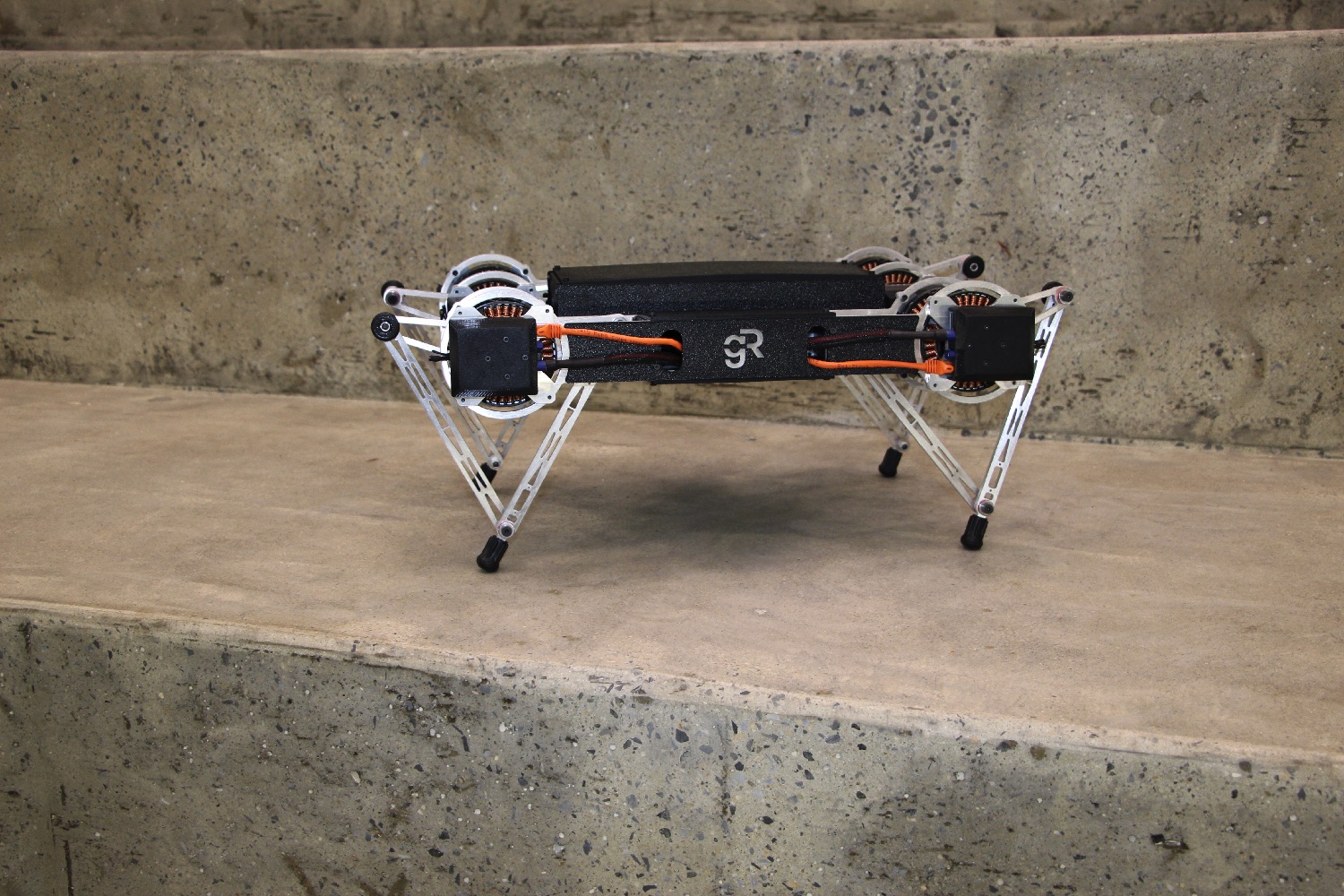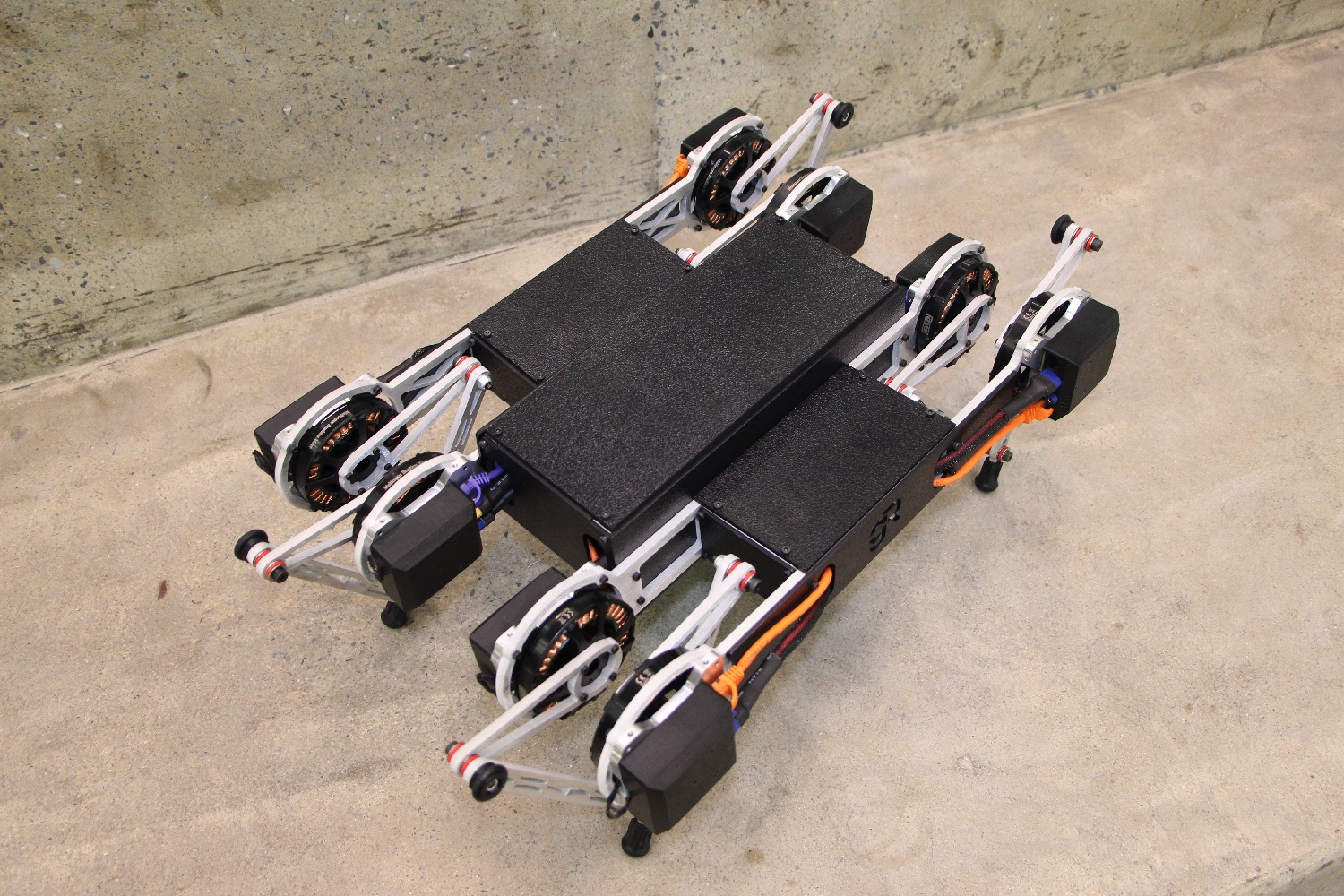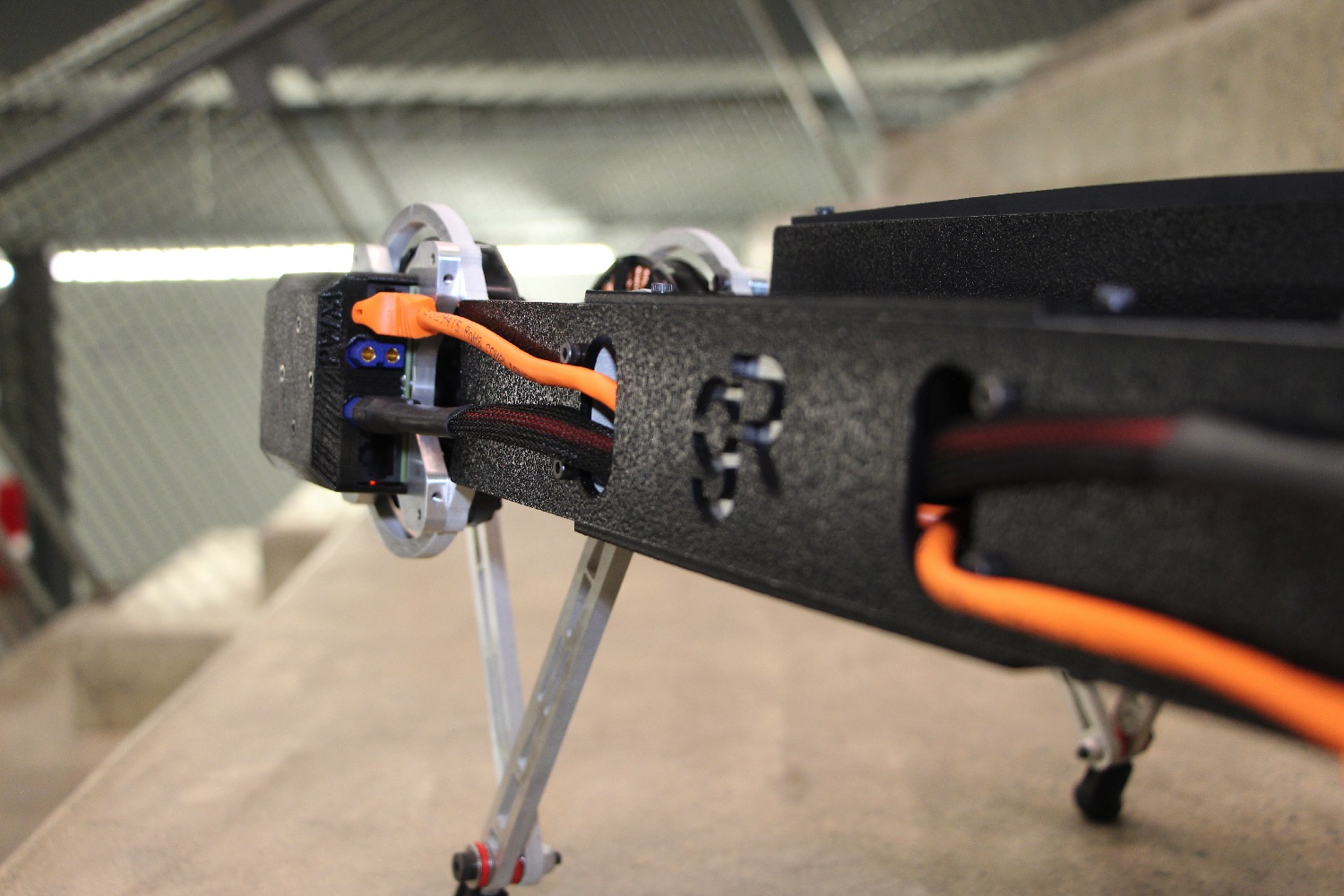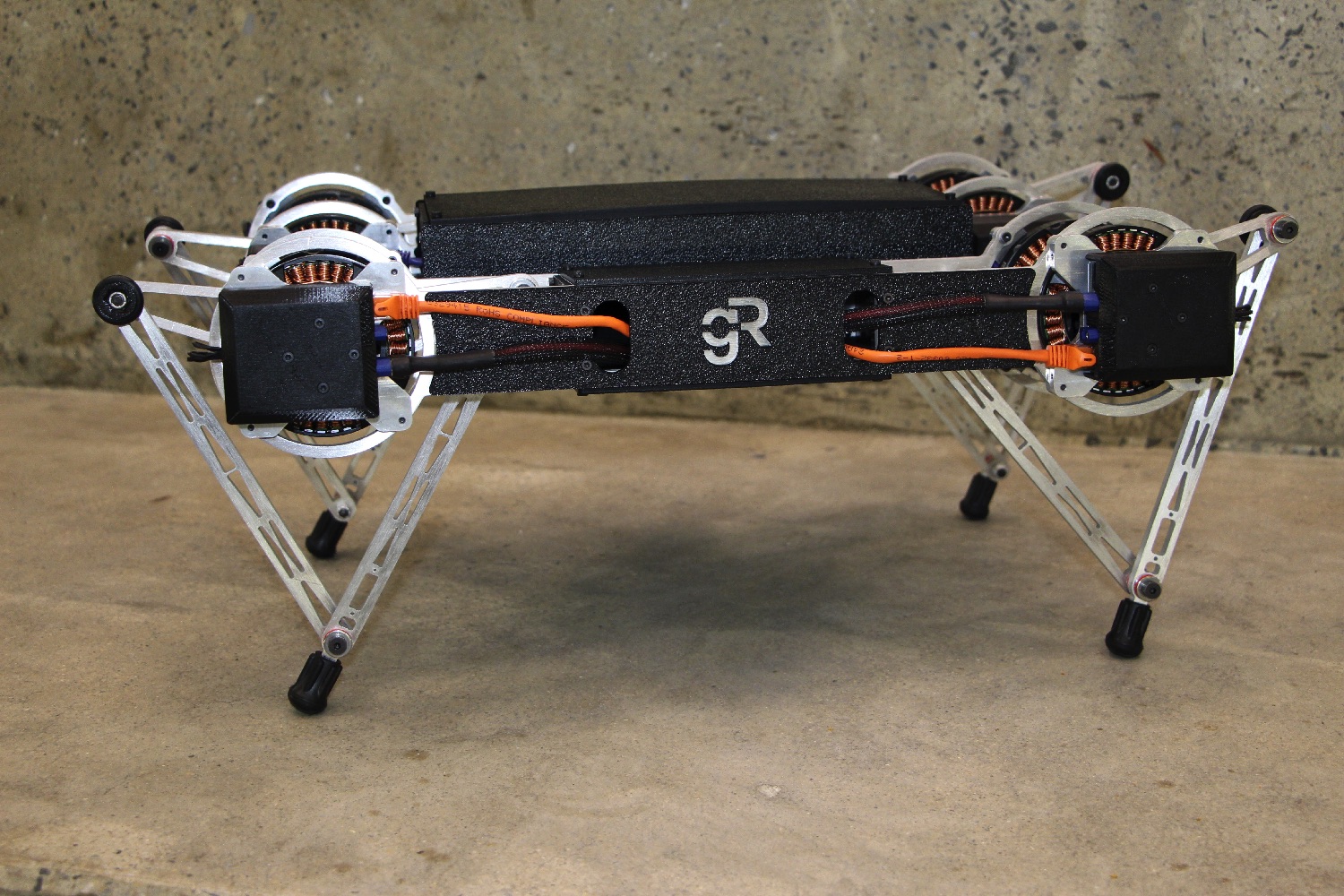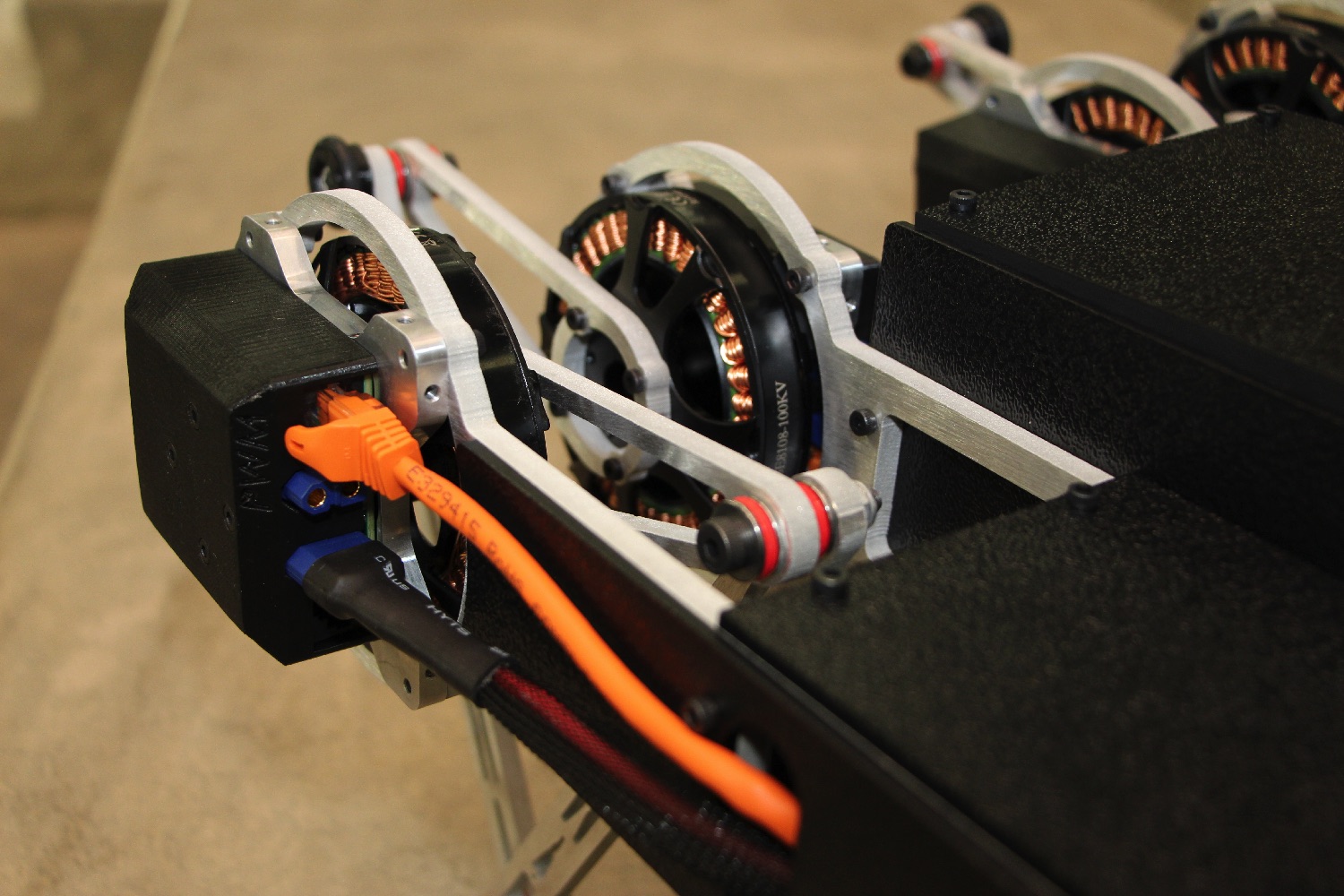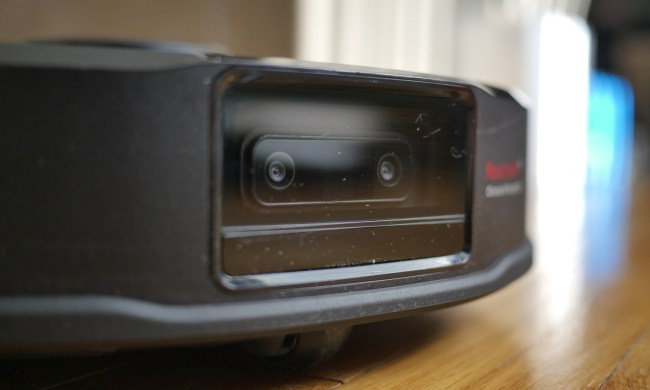That’s changing thanks to a Philadelphia-based startup called Ghost Robotics. Ghost has created a four-legged, direct-drive robot called the Ghost Minitaur that’s capable of running and jumping on tough terrain, reorienting itself after falls, and even climbing fences.
In short, it’s another dog-inspired robot, but one that’s set to carry the far more reasonable price tag of around $1,500 once it finally makes it to market.
“The simple pitch is that these are software-controlled legged robots that use high torque motors, motor controllers, and specialized leg design to outperform many wheeled and tracked robots, particularly on difficult or unknown terrain,” Ghost Robotics CEO Jiren Parikh told Digital Trends. “Our idea is that these robots can do so much more in terms of movement, whether it’s climbing stairs or dealing with mountainous terrain.”
The Ghost Minitaur started life as a research project by University of Pennsylvania Ph.D. candidates Avik De and Gavin Kenneally, and was then spun off as its own company. Although real-world robots are still in their infancy outside of industrial applications, Parikh said he was excited about many of the applications for this particular metal canine.
“It’s basically a moving sensor platform,” he explained, noting how the bot can be used to carry out various readings thanks to its on-board array of sensors. This opens up use cases in everything from exploration and field surveys to military missions and even search-and-rescue missions. Because of the low price point for the units, it will also be possible to affordably launch fleets of the Ghost Minitaur to carry out particular jobs.
“For example, a farmer could let a dozen of these go and they could then move through the farmer’s land, continually taking accurate environmental sensor readings — including soil samples and the like,” Parikh continued.
Right now, there’s mass-market launch date announced for Ghost Minitaur, but one thing’s for certain: We want one.
Even if it’s just for hanging around our homes, and terrorizing our housemates.
